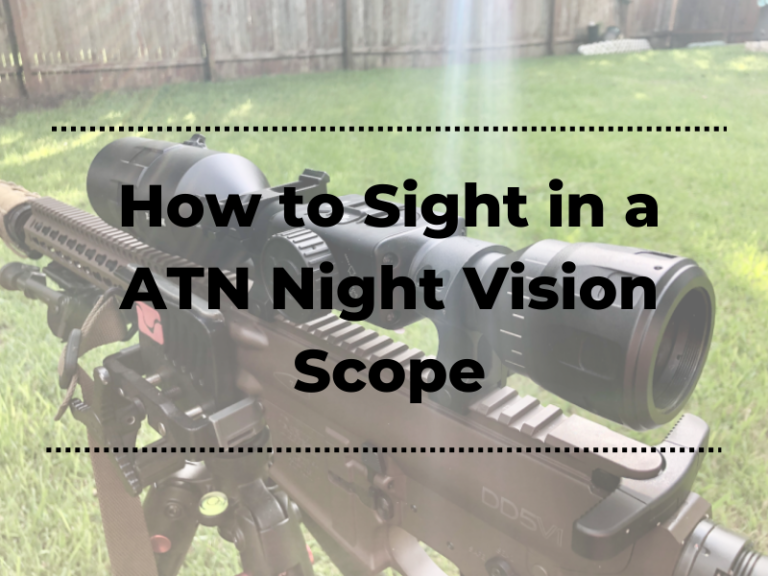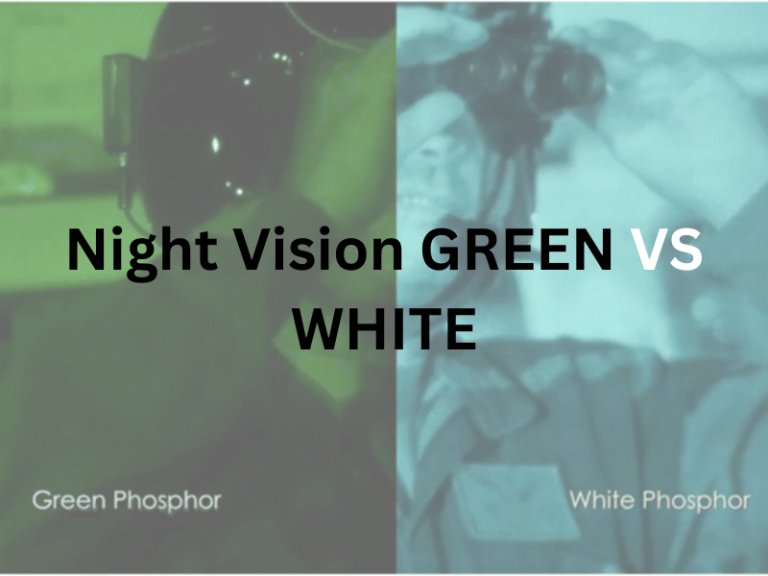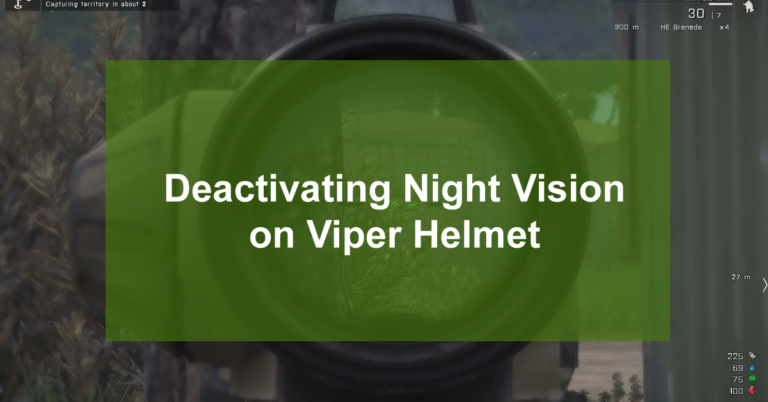Types of Scope Reticles (Explained) with Pictures
Scope reticles come in all shapes and sizes. We seemed there are countless types of scope reticles available today, each serving a specific purpose. Some hunters prefer a simple crosshair reticle, while others prefer something more specialized, like a rangefinder or mil-dot reticle.
No matter your preference, it’s essential to understand the different types of scope reticles available to you. This will help you choose the right scope for your needs and ensure you get the most out of your shooting experience.
What is a Scope Reticle?
A scope reticle is a symbol, typically shown on the lens of a firearm or on a crosshair on a telescopic sight, that shows where the shooter intends to point the weapon. Scope reticles come in many shapes and sizes and can be used with either scopes or binoculars.
They are often used to help the shooter maintain accurate aim while shooting. Scope reticles can also be used to indicate various ranges and target sizes when using firearms.
The Function of the Reticle
The reticle is a critical part of any rifle scope, and its function is essential to accuracy. In addition to this, the reticle helps shooters aim their shots precisely by providing a reference point for lining up the shot.
The reticle can be simple or complex, but its purpose is always the same: to help shooters hit their target. A simple reticle may consist of a crosshair drawn on the barrel of the gun, while a more complex reticle may include lines and circles that indicate elevation, windage, and other shooting data.
Regardless of its complexity, the reticle must be correctly oriented in order for shooters to use it effectively. If the reticle is not placed accurately on the barrel of the gun, it will be nearly impossible to hit targets with accuracy. Therefore, it is important for shooters to pay close attention to the orientation of their reticles before taking any shots.
However, there are different reticles than you can use for:
- Bullet drop compensation
- Laser rangefinding
- Low light shooting
- Hog/pig hunting
- General hunting reticles
- Illuminated reticles
- Tactical reticles
11 Different Types of Scope Reticles
After taking a look into dept, we have now figured the 11 different types of scope reticles with thier pcitures that you can choose according to your needs. But the most common types we noticed in scope reticles are: duplex reticles, mil-dot reticles, and German reticles. Because of thier usage, durability and performance, everyone choose these scope.
You can look in below to find the scope reticles according to your needs.


1. Duplex reticle
Duplex reticles are becoming increasingly popular for riflescopes. This type of reticle provides two lines of crosshairs that allow you to hit targets simultaneously at different ranges. You can use duplex reticle in any field for shooting because it has a great feature for precision shooting, as they make it easy to hit small targets at close range and large targets at long range.

2. Mil-dot reticle
The mil-dot reticle is a simple but effective optic design used in military and hunting rifle scopes for decades. However, these reticle consists of small, closely spaced dots that help shooters position their crosshairs over their target.
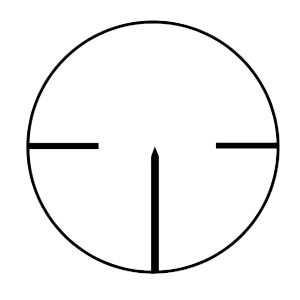
3. German Reticle
The German reticle is a type of aiming crosshair often used in the military and hunting firearms. It is characterized by its distinctive shape and has been used since the 18th century. These reticle typically consists of a horizontal line that extends from the bottom of the target to the top, with a series of concentric circles surrounding it.
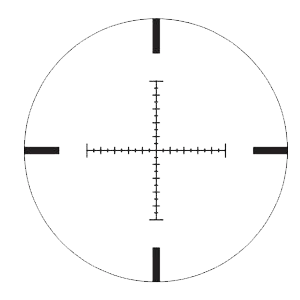
4. Illuminated reticles
Illuminated reticles are a new type that uses LED illumination to provide a bright, visible aiming point in low-light conditions. Though still in development, illuminated reticles are already being used on firearms, and their popularity is only increasing. Here we’ll explore the benefits and drawbacks of illuminated reticles and give you a few tips on choosing the best one for your needs.
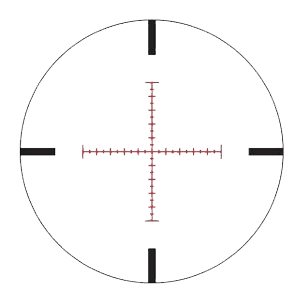
5. Non-Illuminated Reticles
A few reticles do not use light to achieve a clear image. These reticles can be used in low-light situations or when you are hunting in the dark. Some benefits of using a non-illuminated reticle are that you will have better visibility in low light and will not have to worry about losing your target due to poor visibility.
6. Turret reticles

A turret reticle, also known as a gun sight or crosshair, is a type of aiming device used on firearms that enables the user to accurately Aim and Fire the weapon by placing their eye at the centre of the reticle and lining up the crosshair with their target. However, the design of a turret reticle can vary, but they all typically consist of a series of concentric circles or lines that serve as an approximate representation of the projectile’s path while in flight.

7. Horus reticles
Horus reticles are a common feature on firearms and other devices used for precision aiming. They are named after the Egyptian god Horus, who was often depicted with a pair of wings and an eye in the center of his forehead, which served as his symbol of vigilance and protection. The design of a Horus reticle is typically based on a grid or other geometric pattern, which allows shooters to more precisely calculate the range to their target.

8. Christmas Tree Reticle
The Christmas Tree Reticle is a helpful tool for helping you aim your firearm in the correct direction. It is designed to help you align the crosshairs of your optic with the top of a live tree, so that you can shoot accurately and without disturbing your tree’s branches.
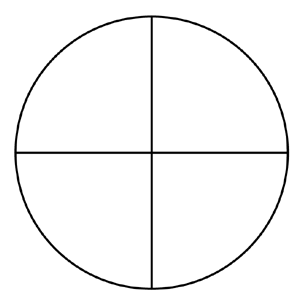
9. Crosshairs
A crosshair reticle is a type of reticle that is found in firearms and artillery sights. It consists of two intersecting lines that create a small, centered square in the middle of the sight. This reticle aims the firearm or artillery at a target by lining up the target within the square. The crosshairs can also estimate the range to a target by measuring the distance between the two lines.

10. Leupold Reticle
The Leupold reticle is a trademarked name for the company’s adjustable duplex crosshairs. However, these reticle designs to provide an exceptionally clear sight picture and accurate aiming point, even in low-light conditions. Also, with this reticle you can be customized to the individual shooter’s preferences and is available on various rifle scopes.
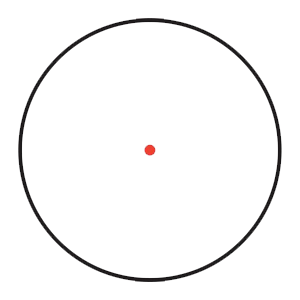
11. Dot Reticle
Dot reticles are the most common type and are simple and easy to use. A dot reticle consists of a small, round dot in the center of the sight picture. When looking through the scope, the dot should be positioned to cover the target you want to hit.
FAQ’s
What are the different types of scope reticles?
There are three types of scope reticles: crosshair, dot, and circle. Crosshair reticles are the most common and are typically used for target shooting. Dot reticles are used for precision shooting and have smaller circles that are easier to see. Circle reticles are used for hunting and have larger circles that can be seen over long distances.
Which reticle is the most popular?
The most popular reticle is the Mil-dot.
What is the difference between a red dot and a green dot scope reticle?
There is a big difference between a red dot and a green dot scope reticle. A red dot scope has a small crosshair located in the center of the sight picture. This allows you to quickly and easily acquire your target. The green dot has a smaller crosshair that is located at the bottom of the sight picture. This allows you to more accurately place your shot.
What are some uses for a red dot scope?
There are many uses for a red dot scope, including hunting, shooting sports, and tactical applications.
Wrapping Up
After reading this article, you will know the different types of scope reticles and what they can do for you. Of course, there are many other factors to consider when choosing a scope reticle, such as your shooting style and specific gun specifications. However, knowing the different types of scope reticles is an essential first step in finding the perfect one for your needs.

